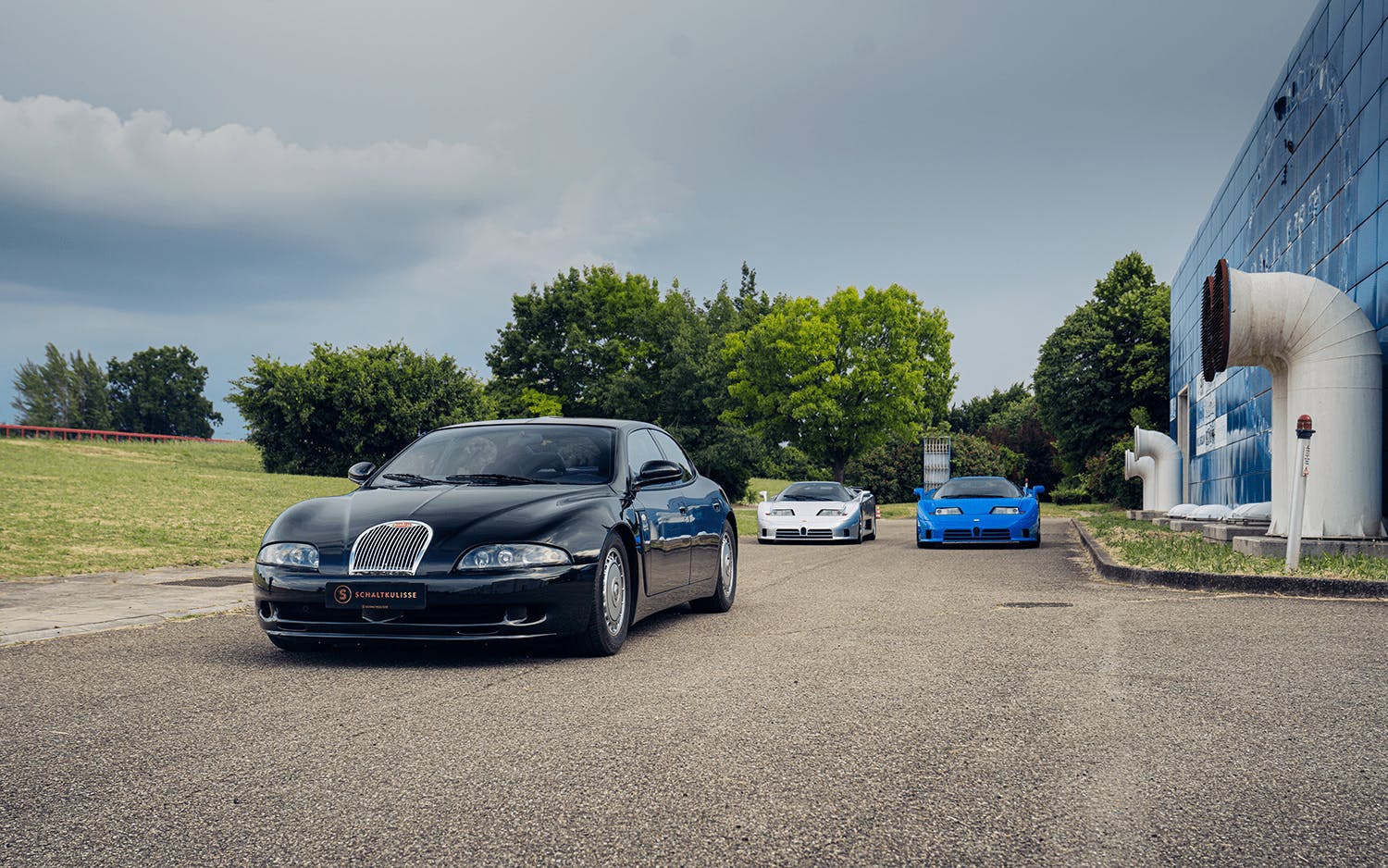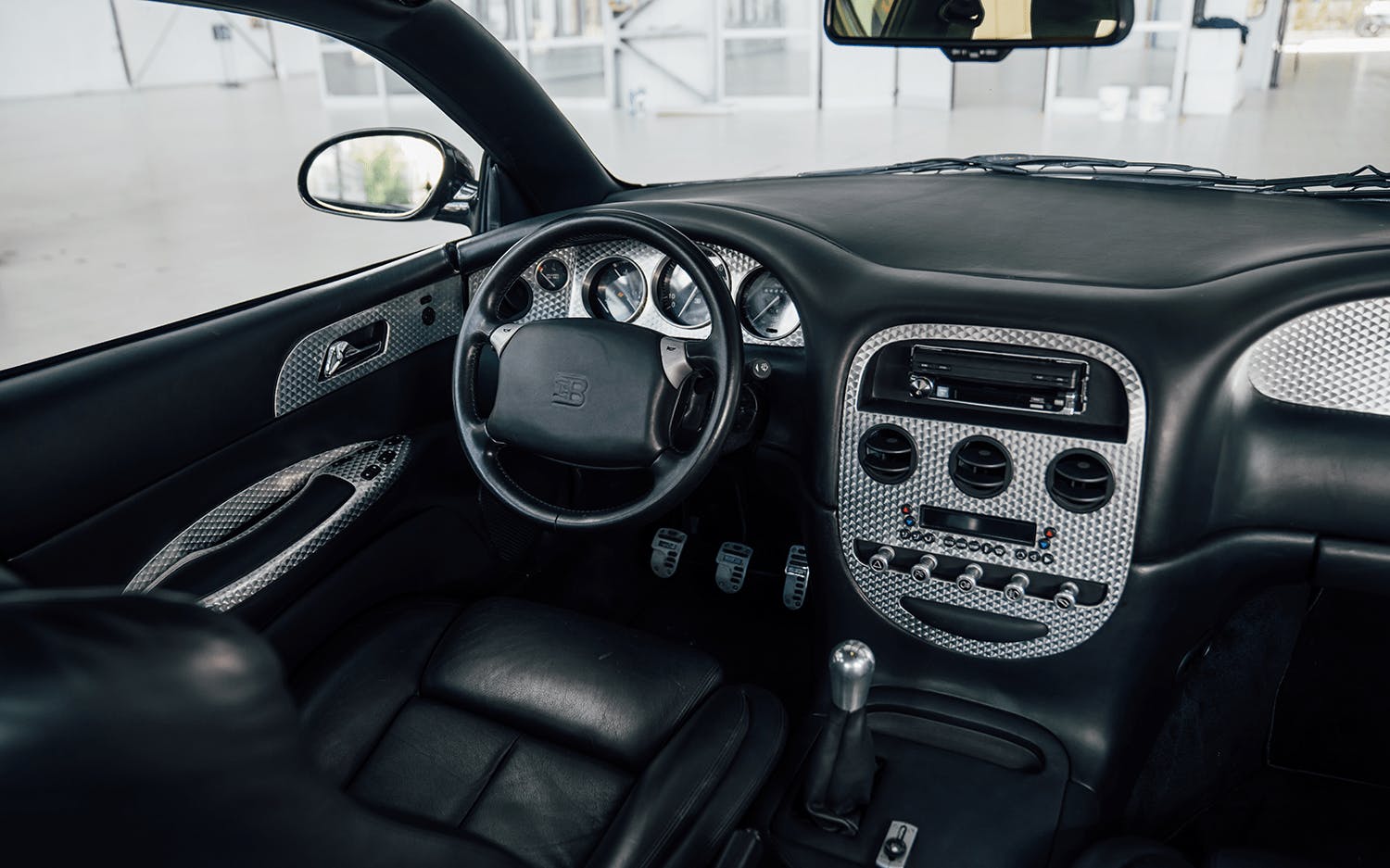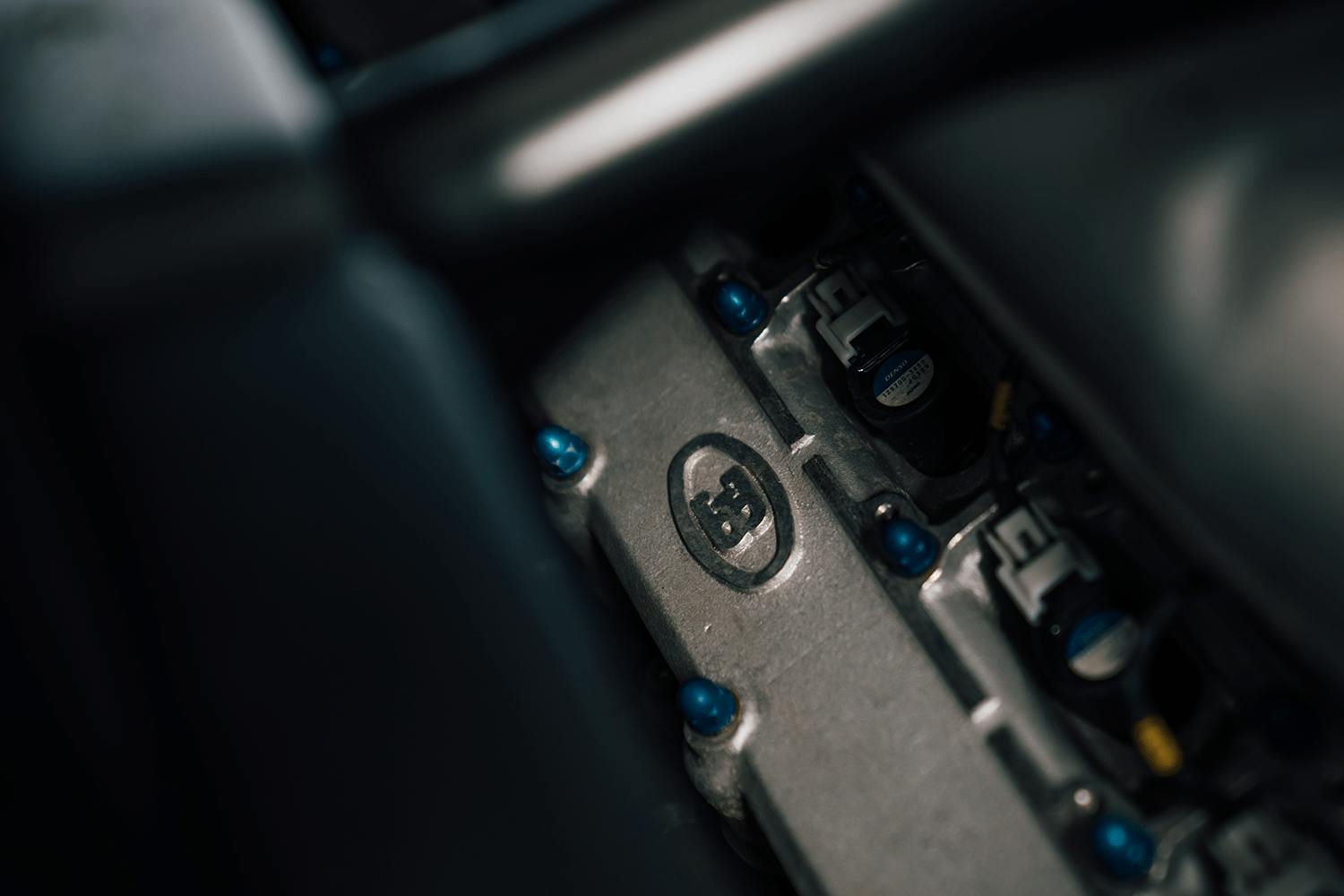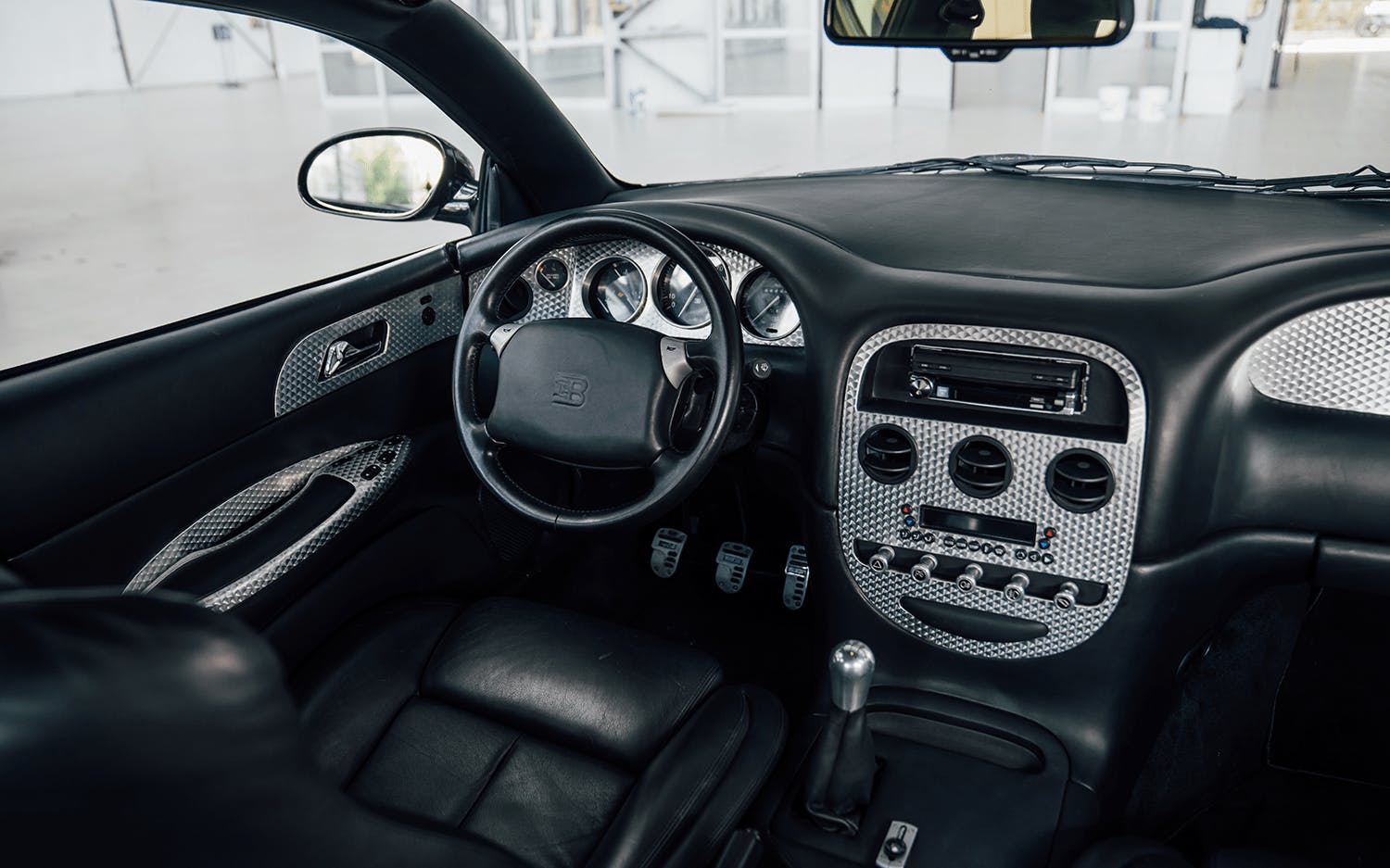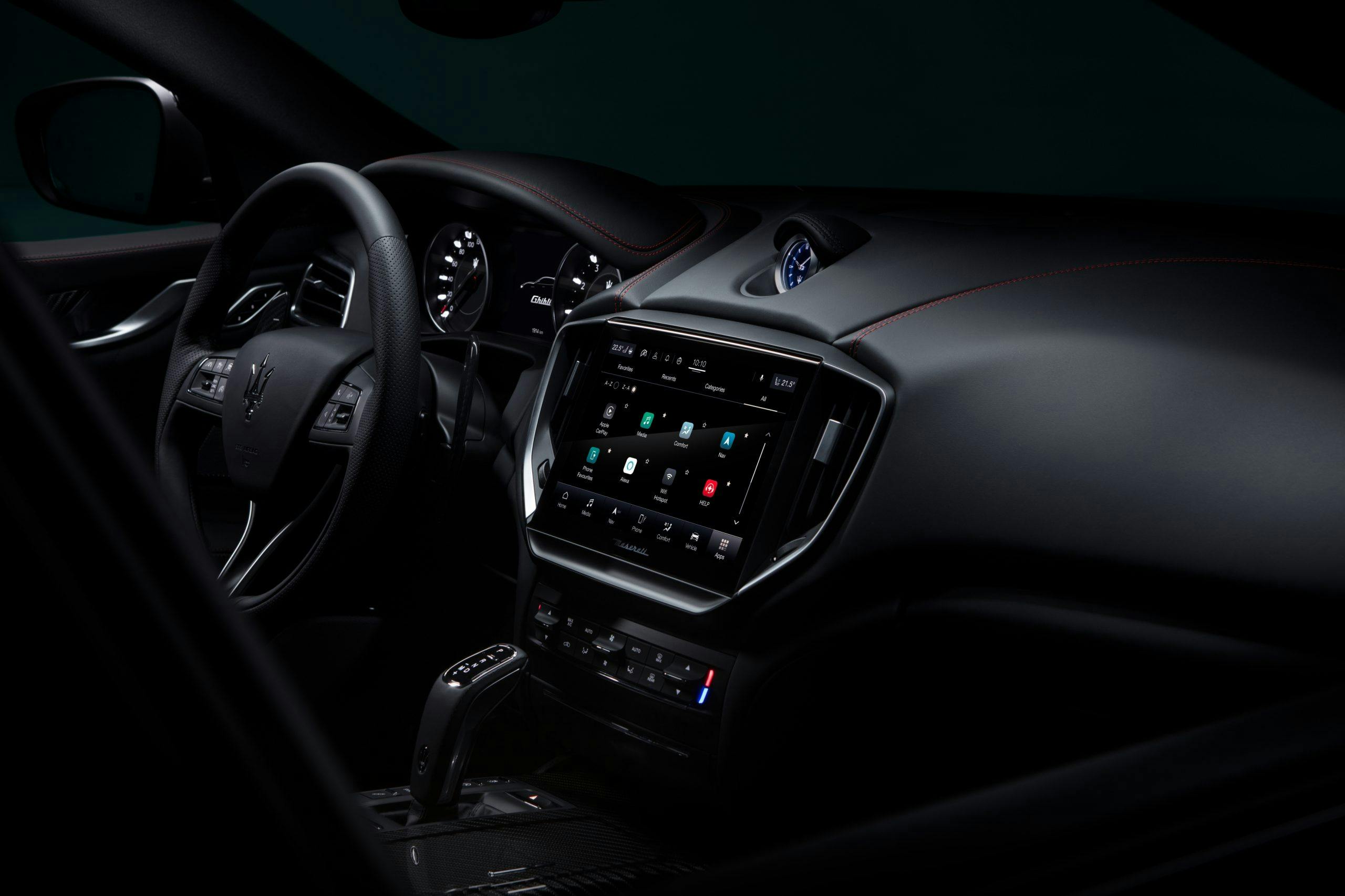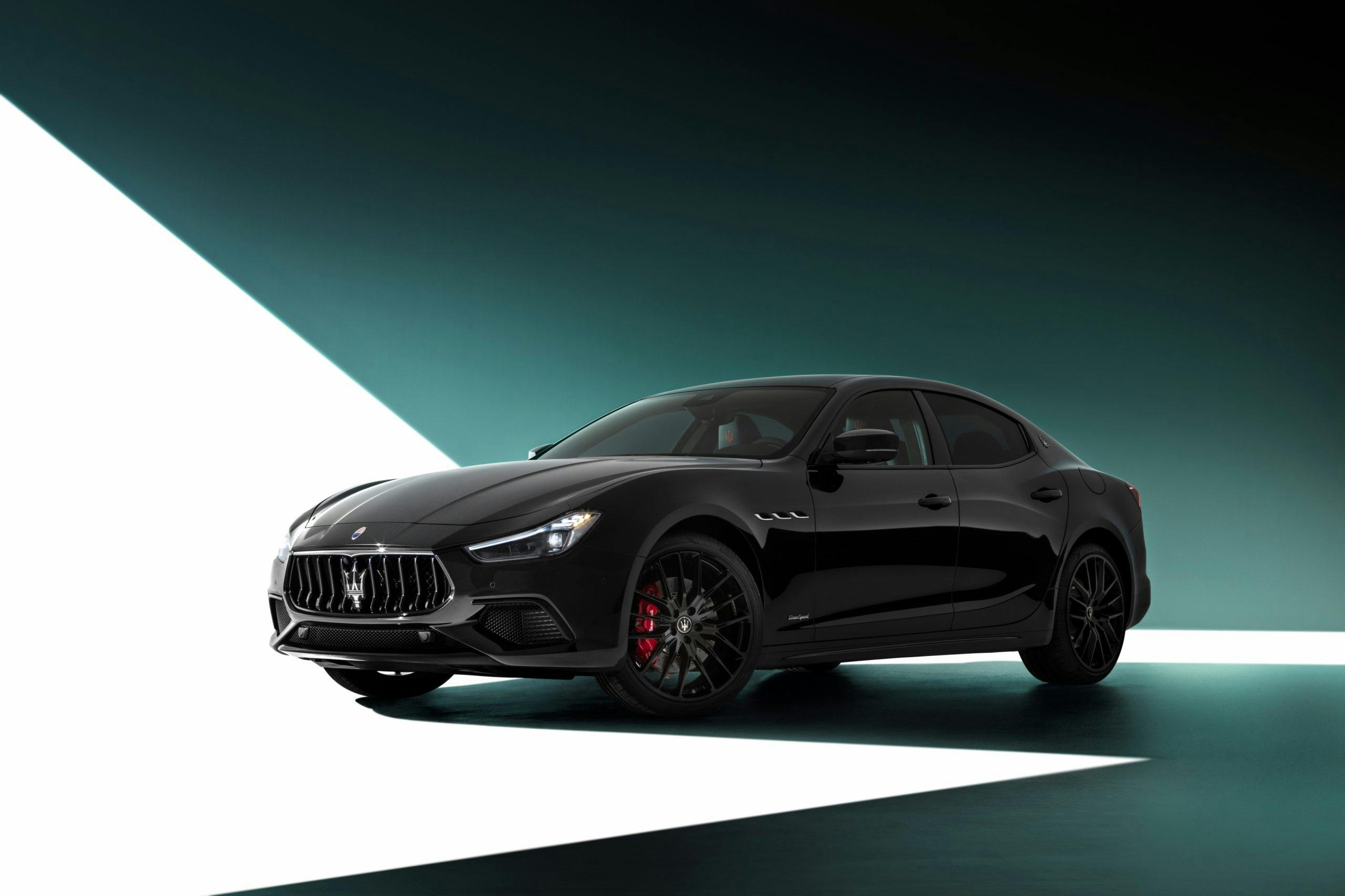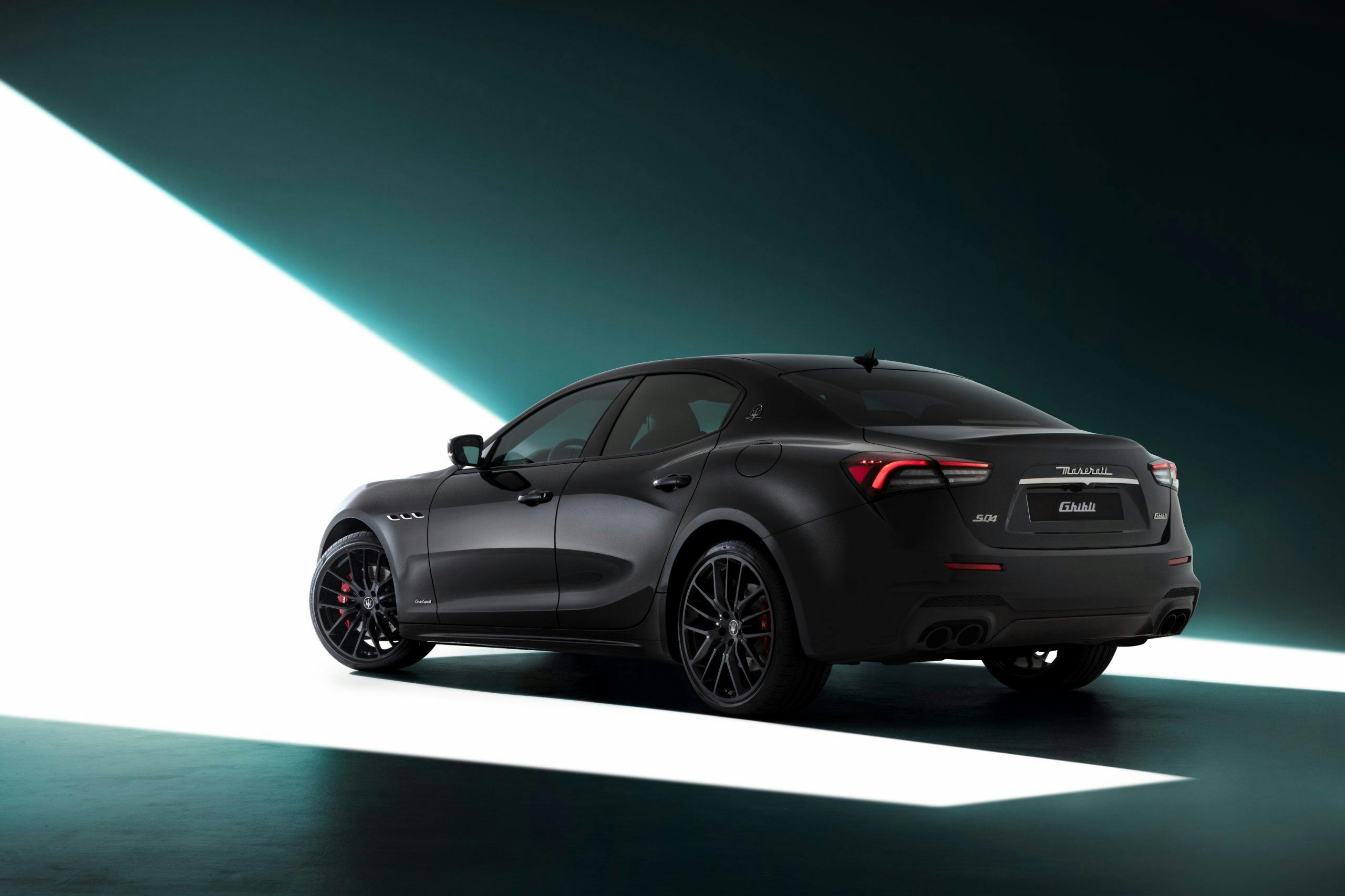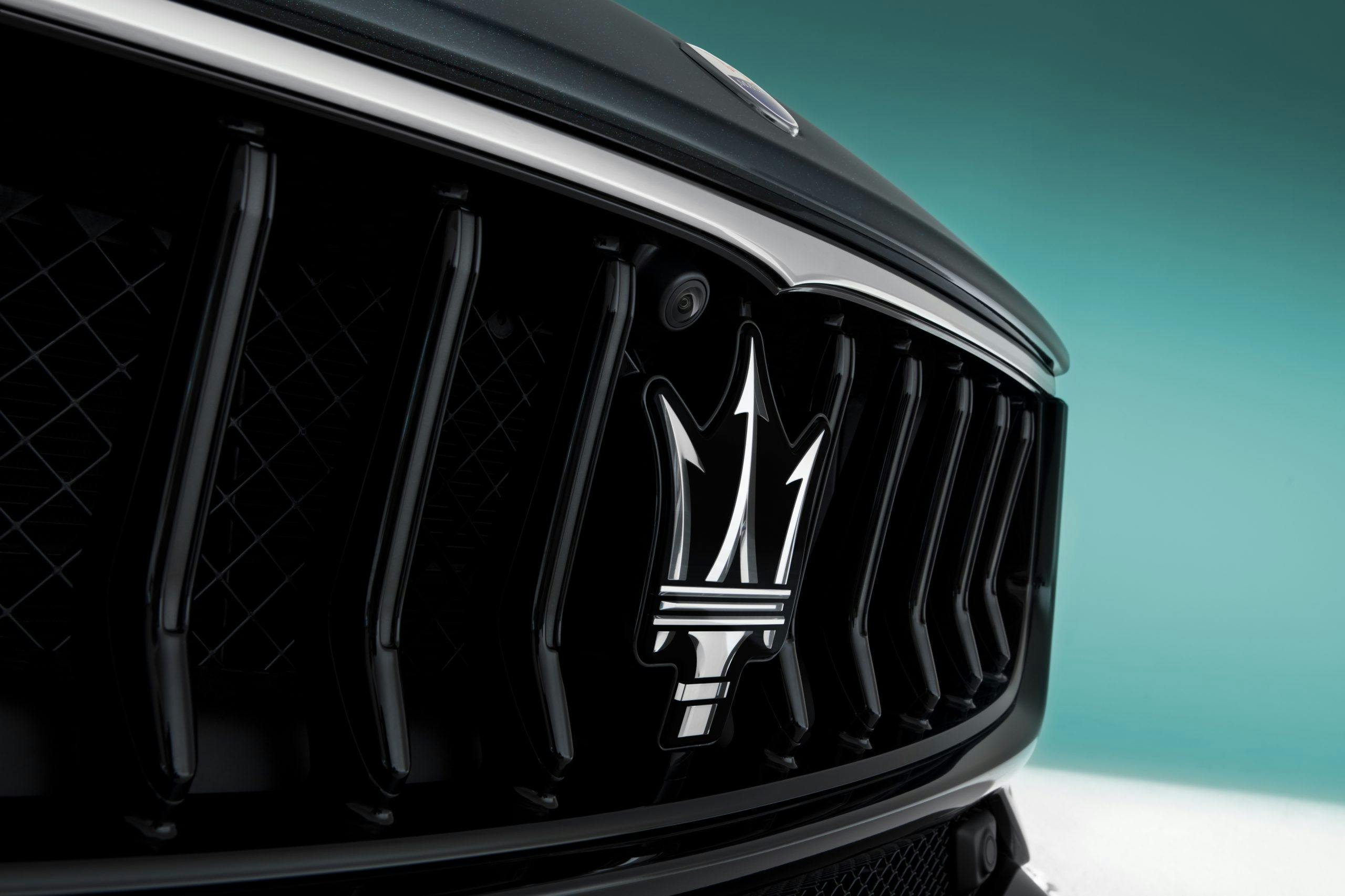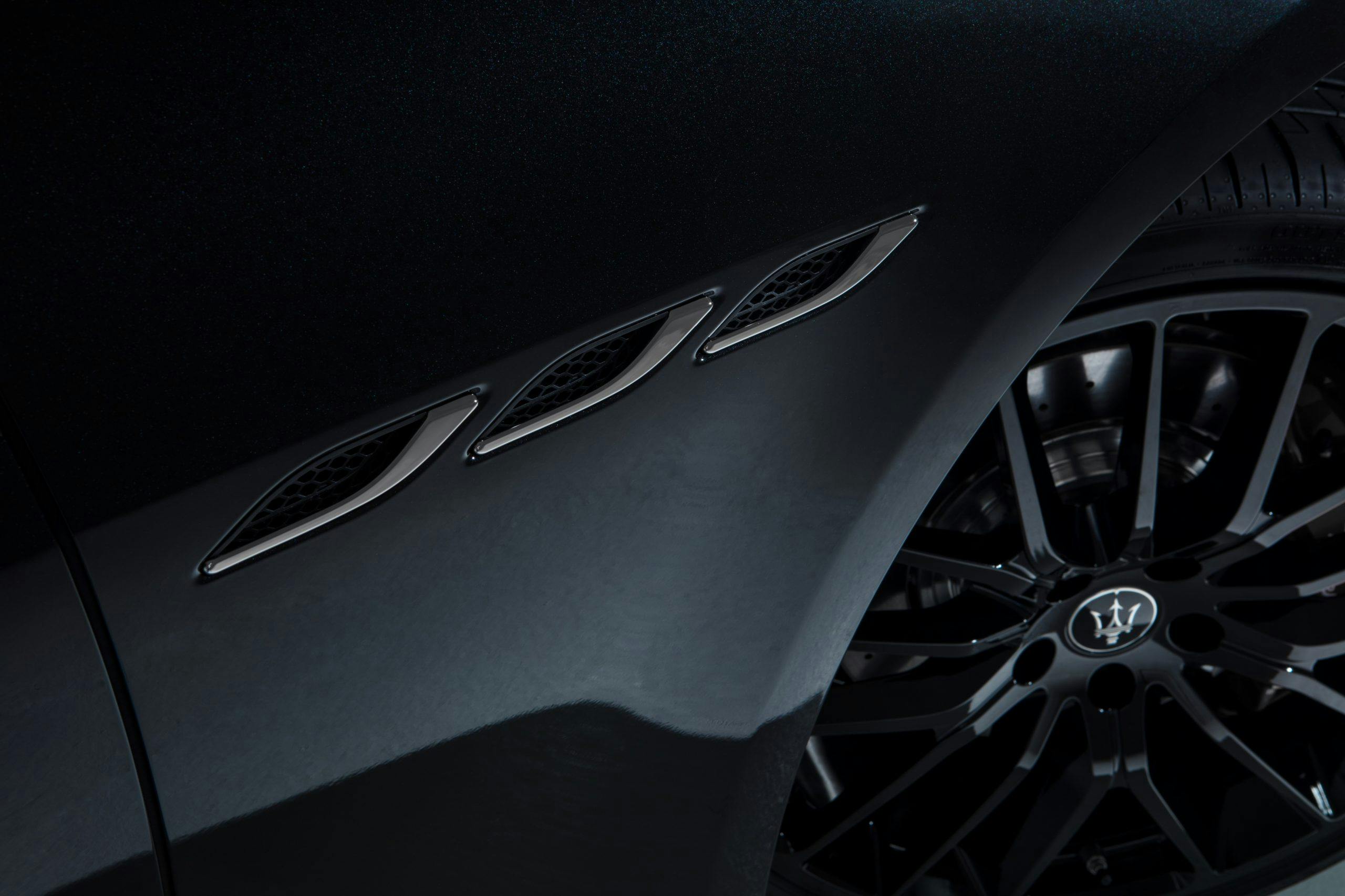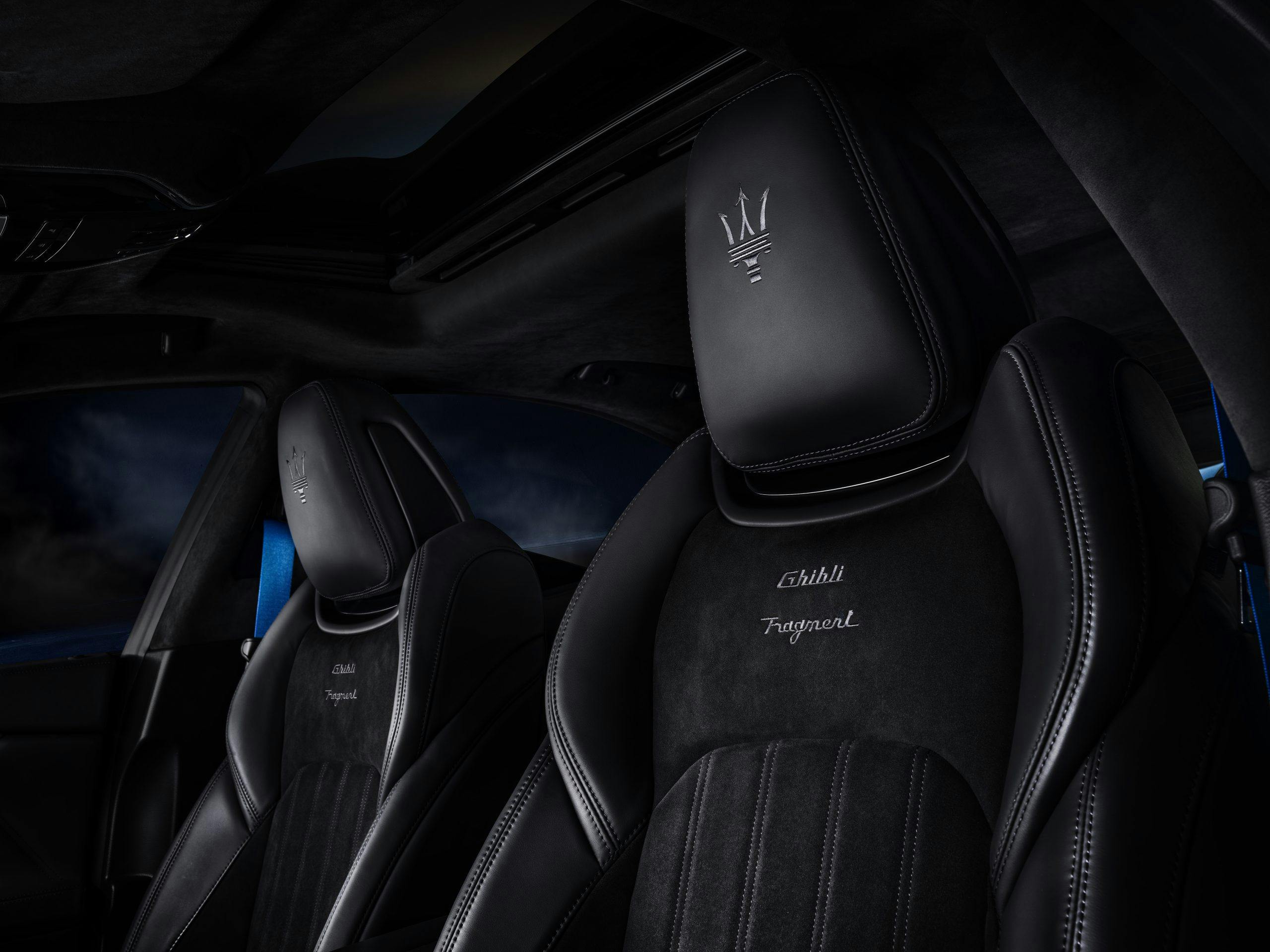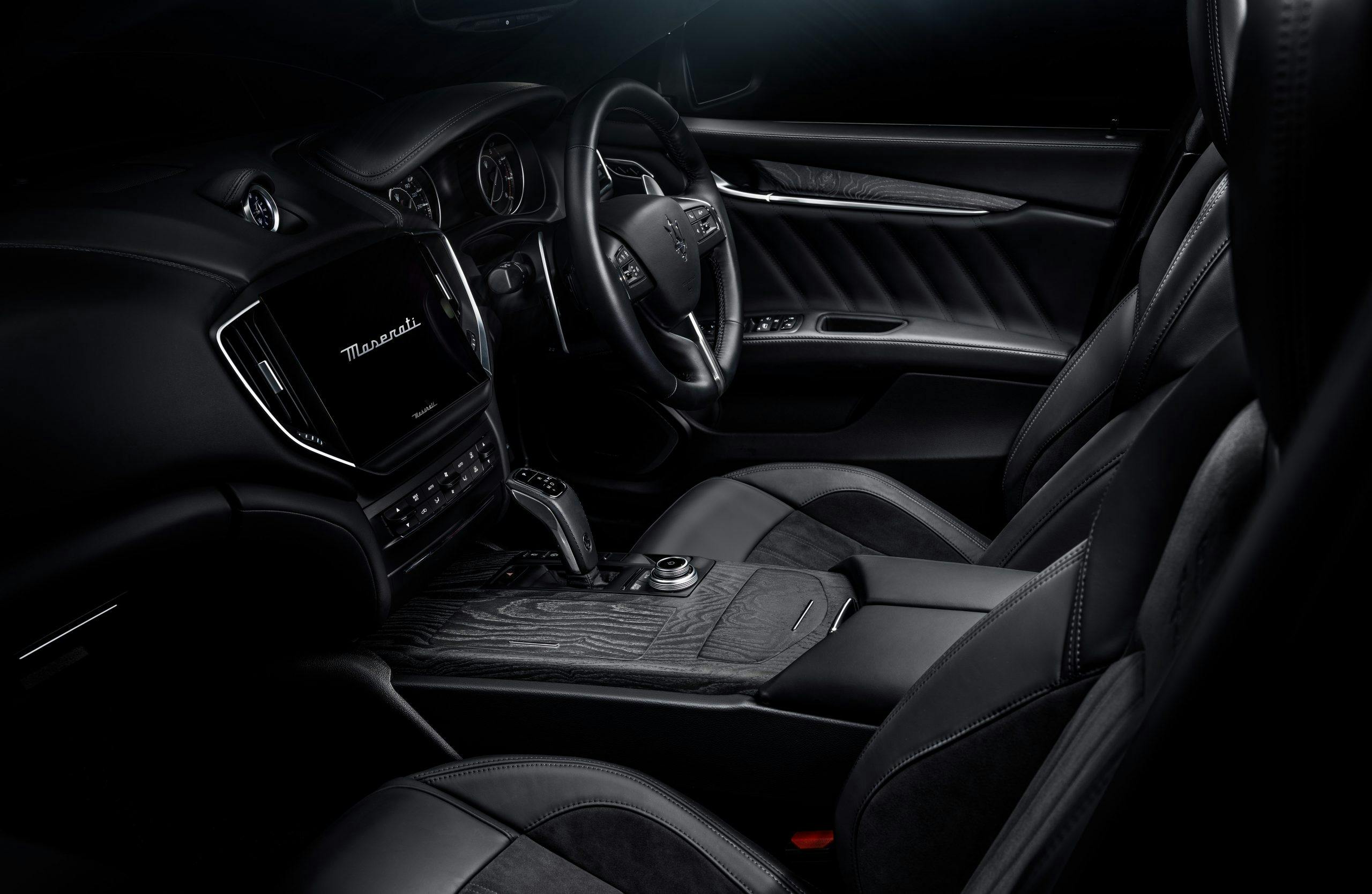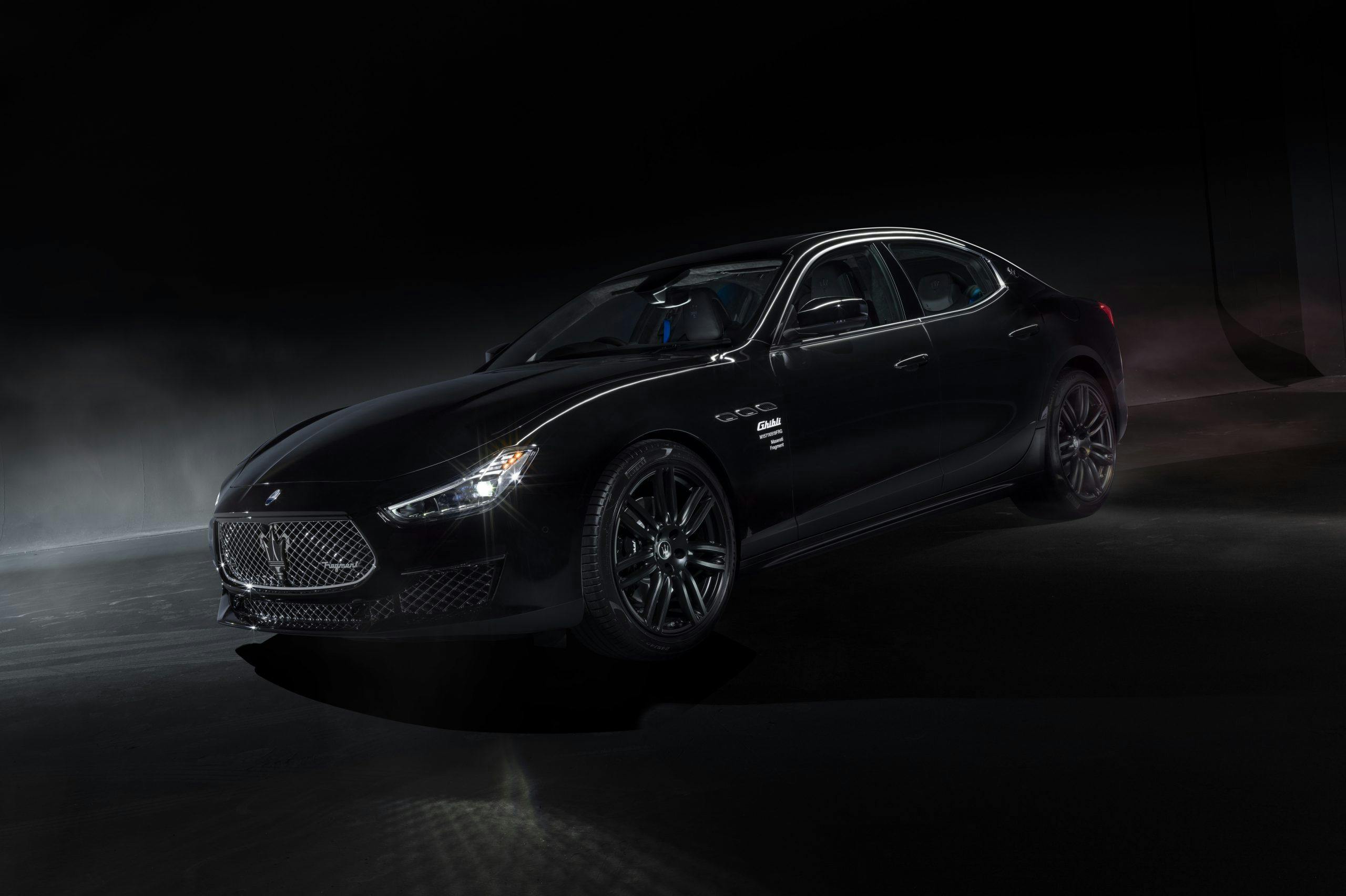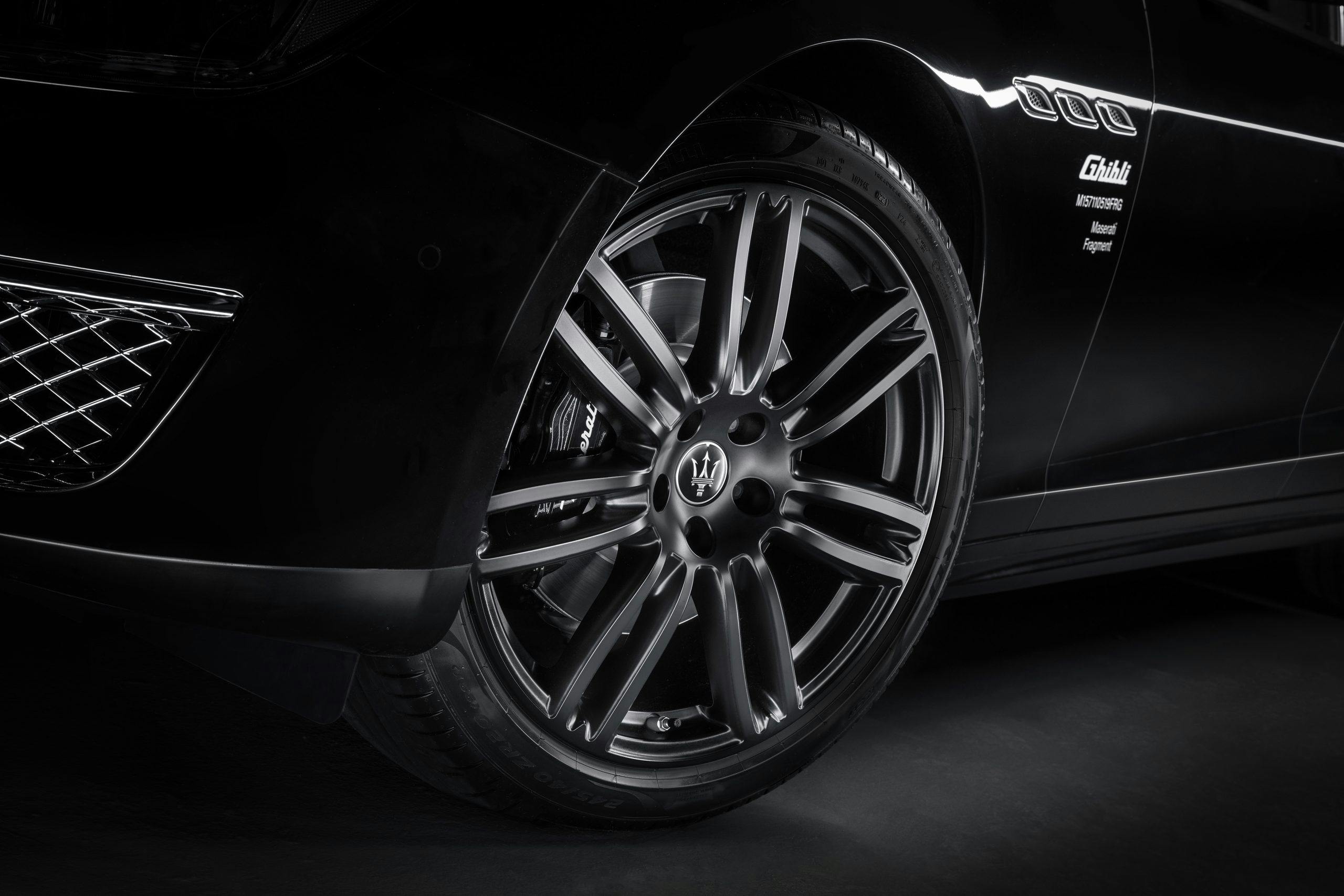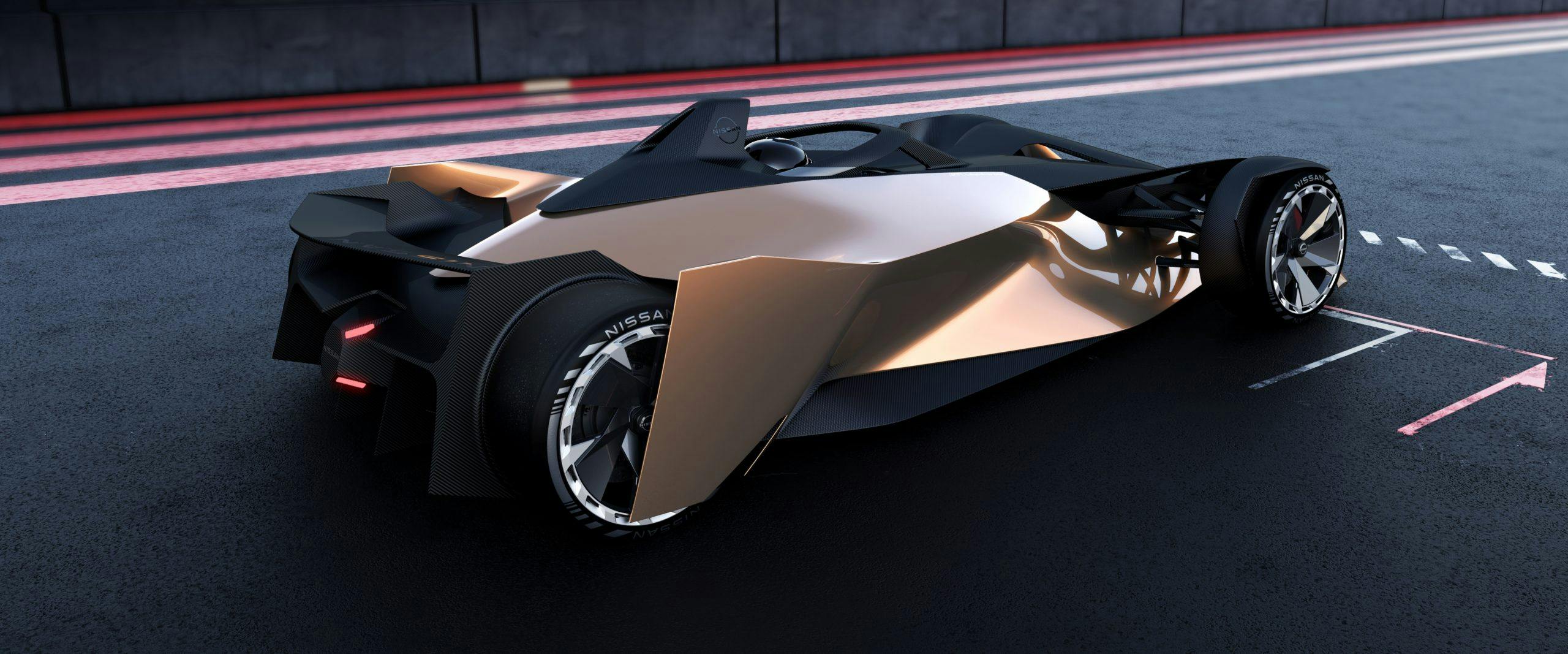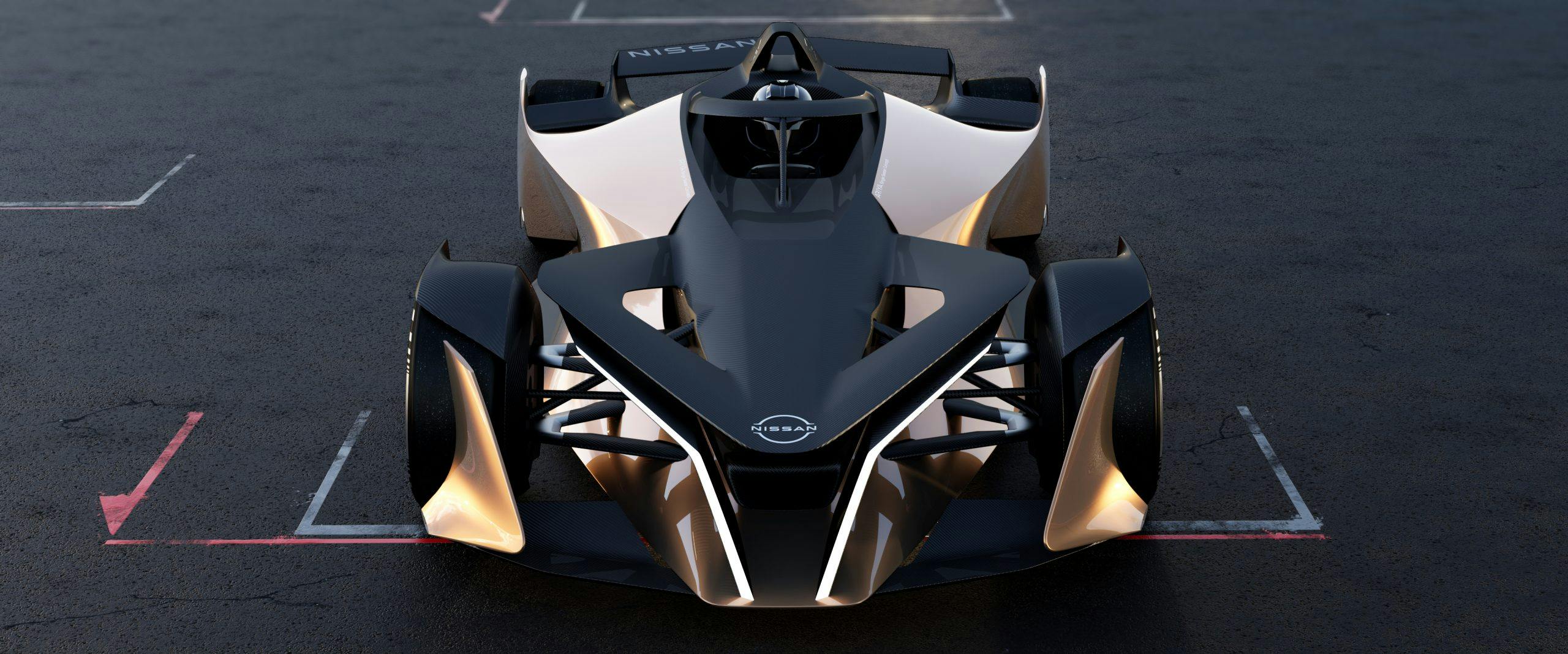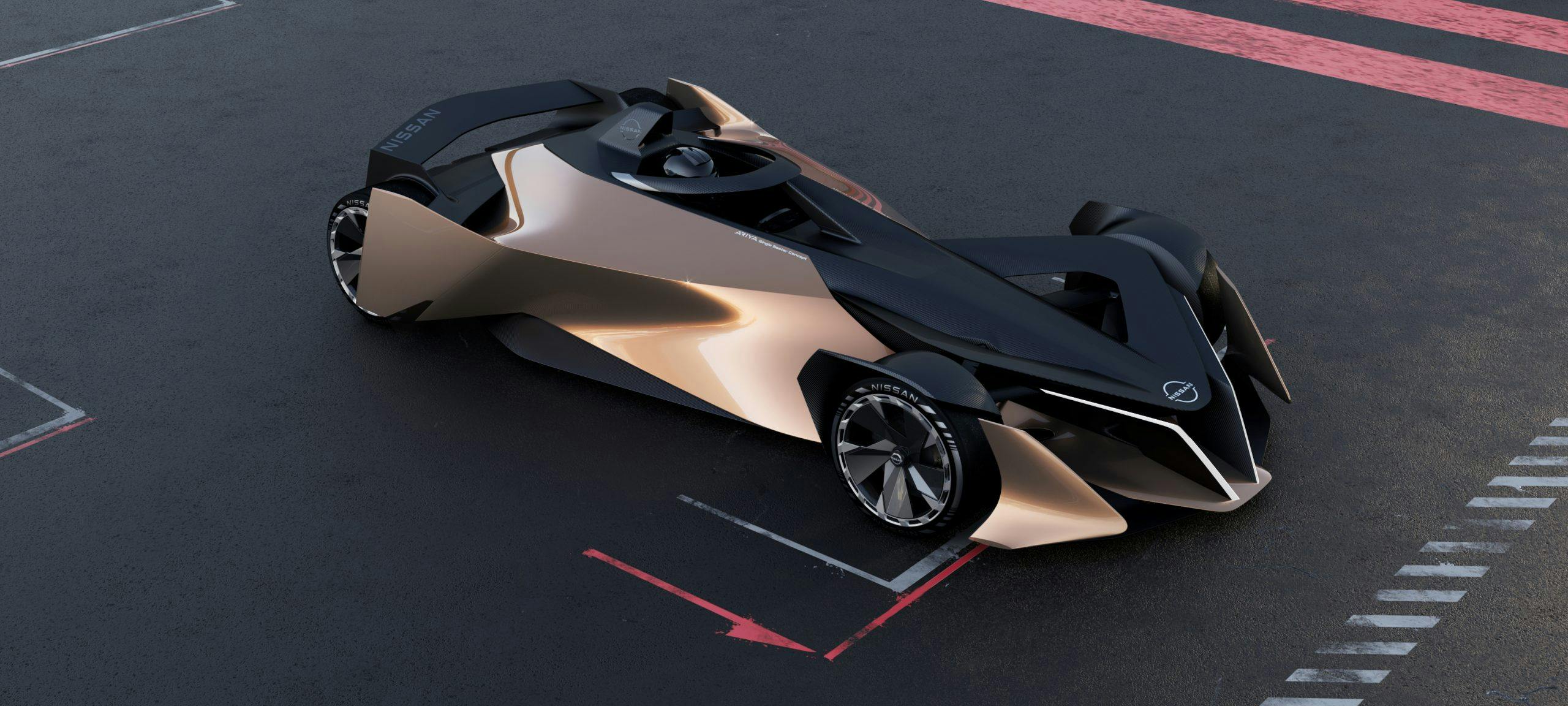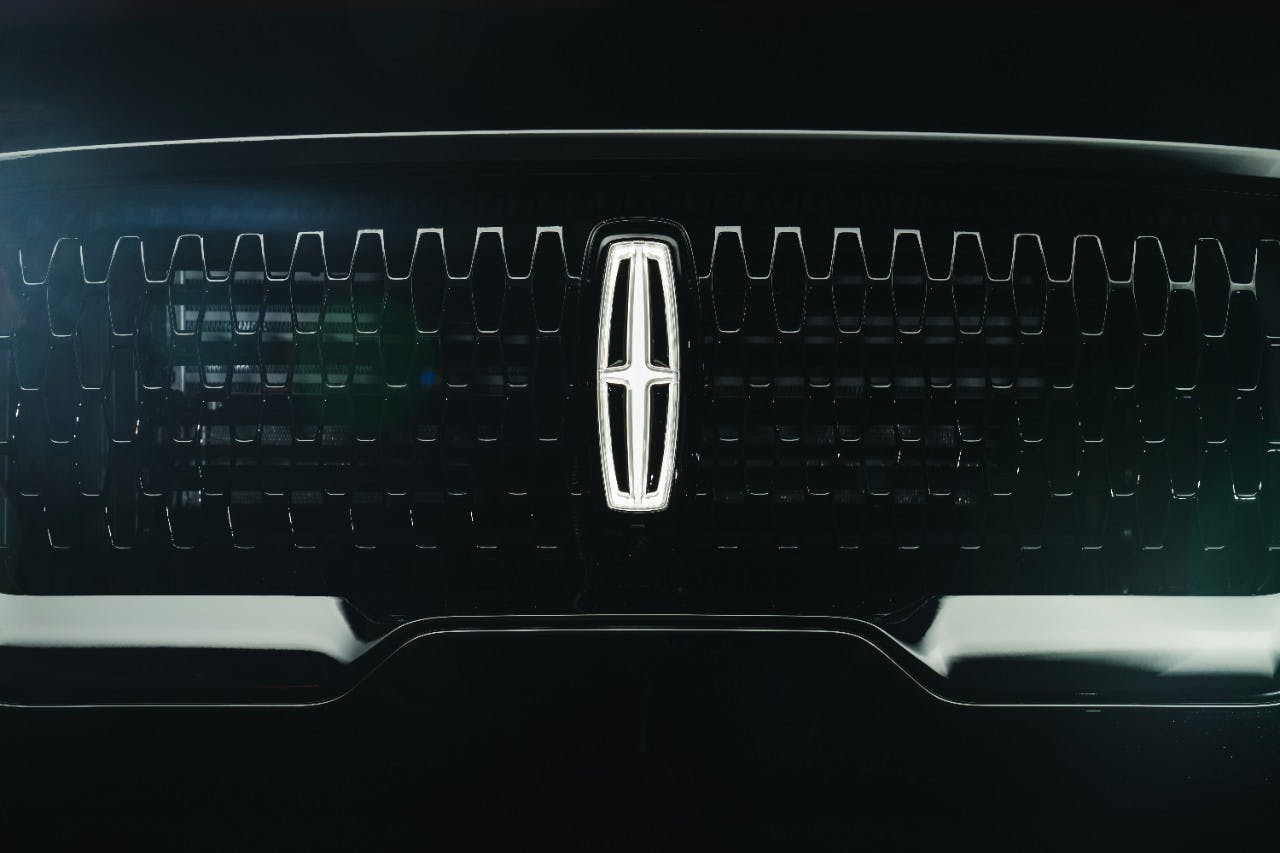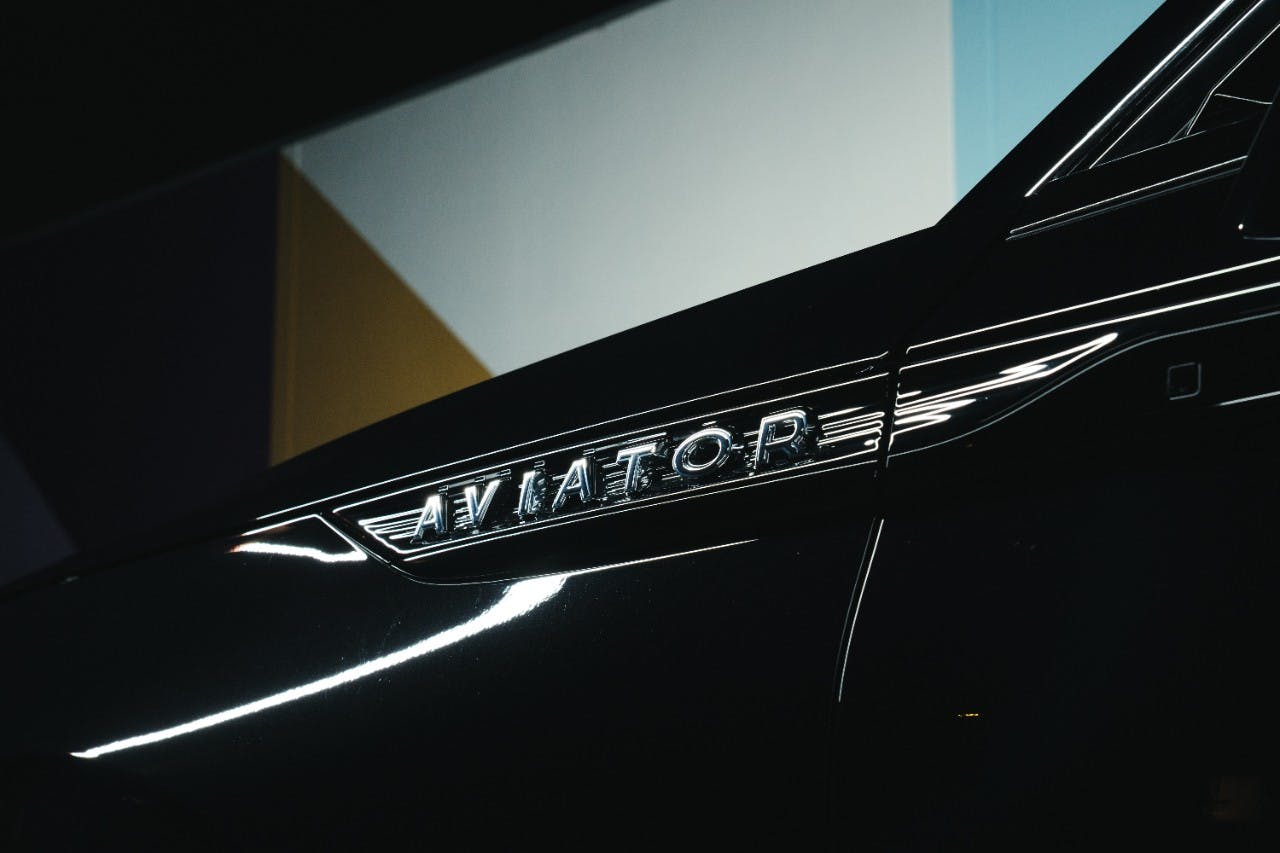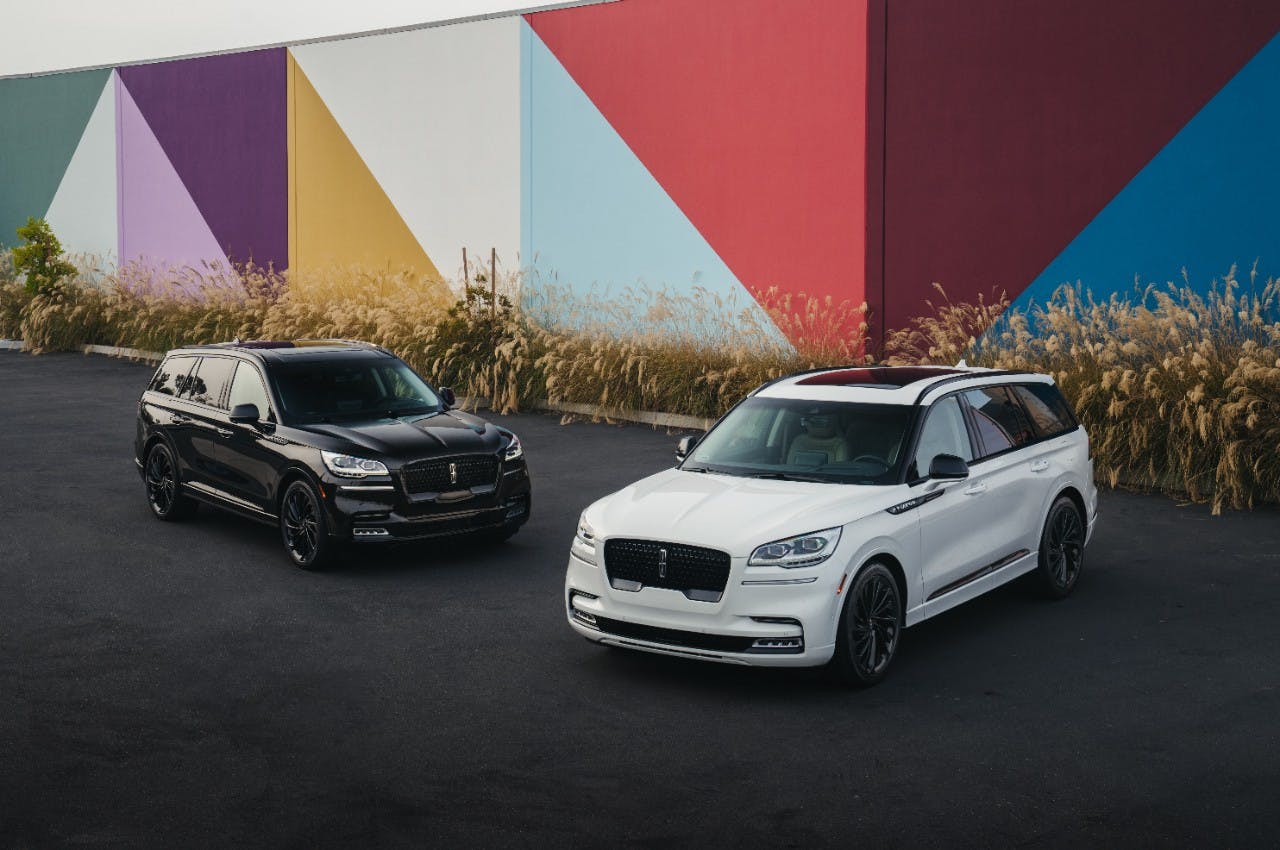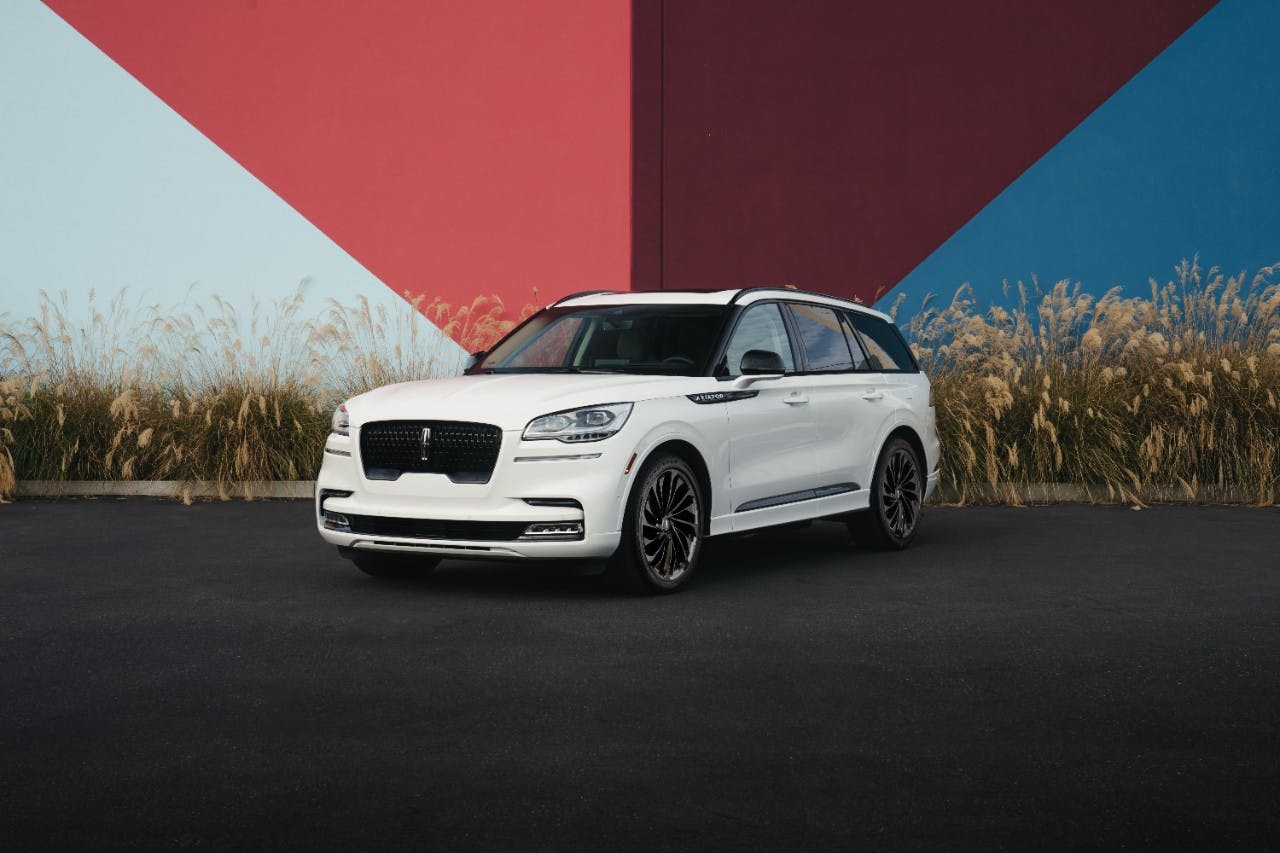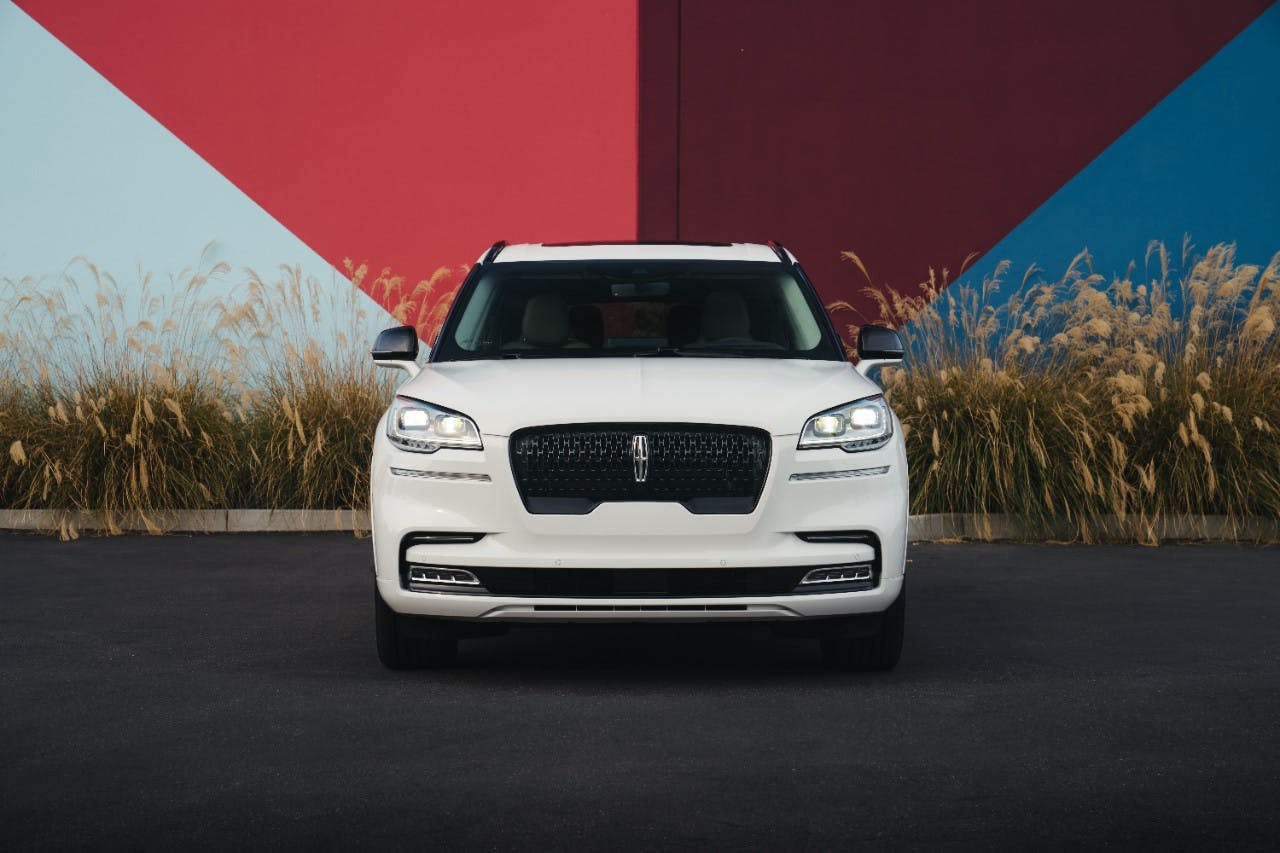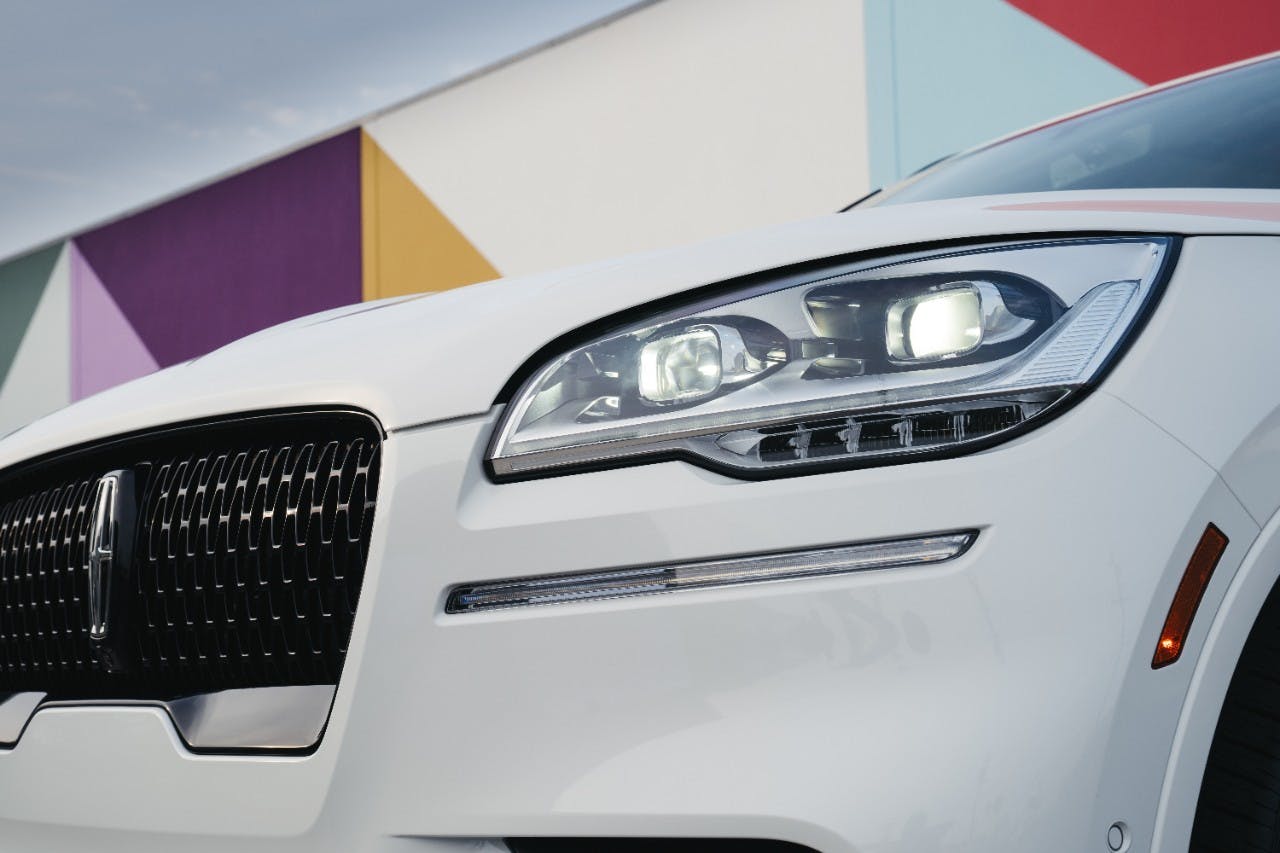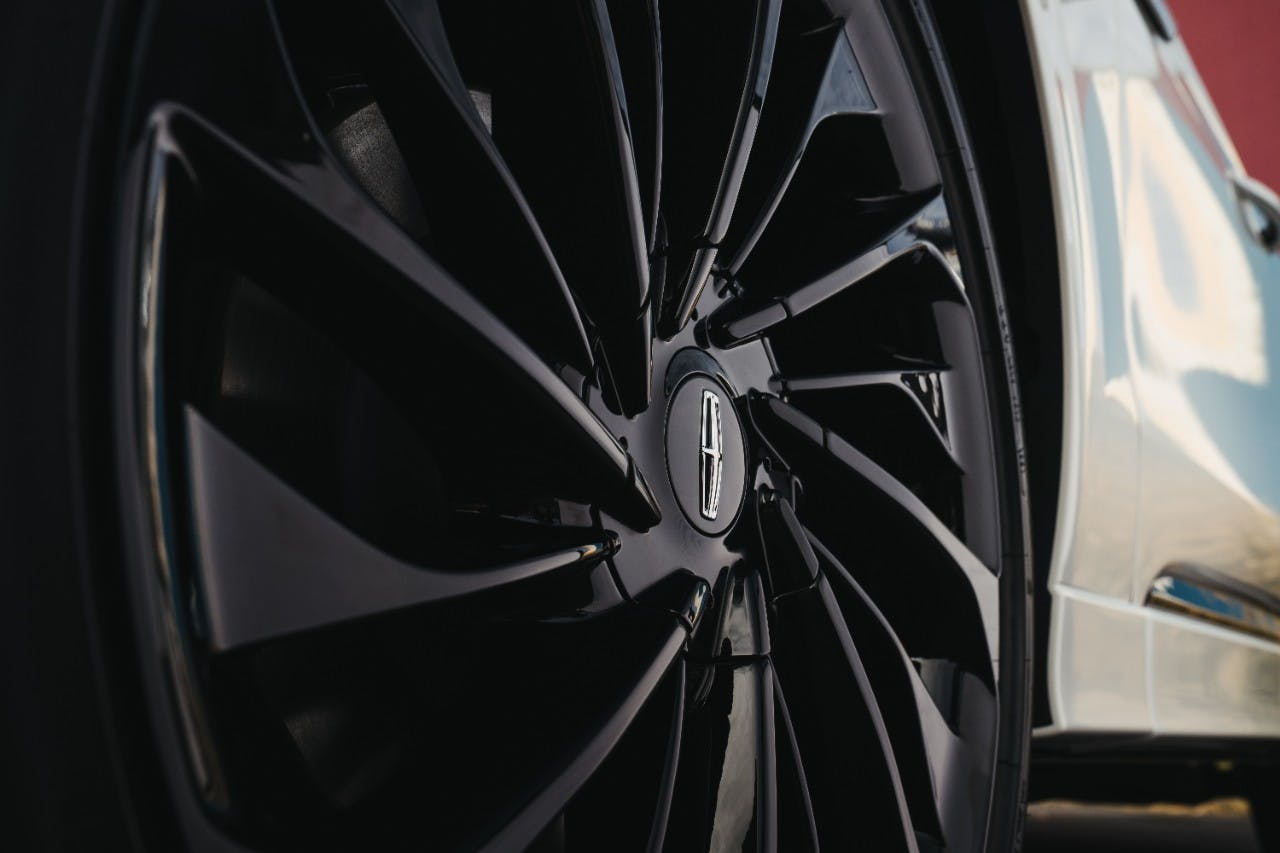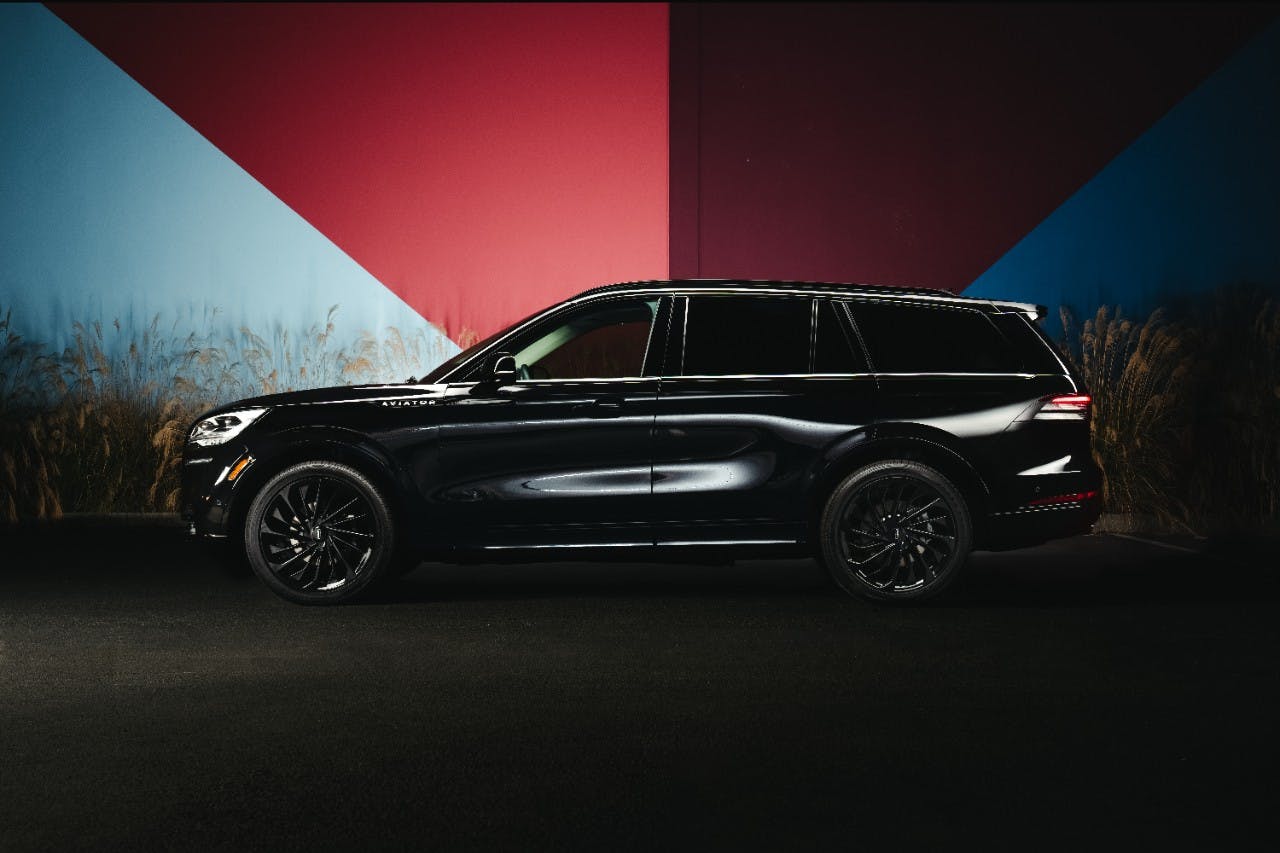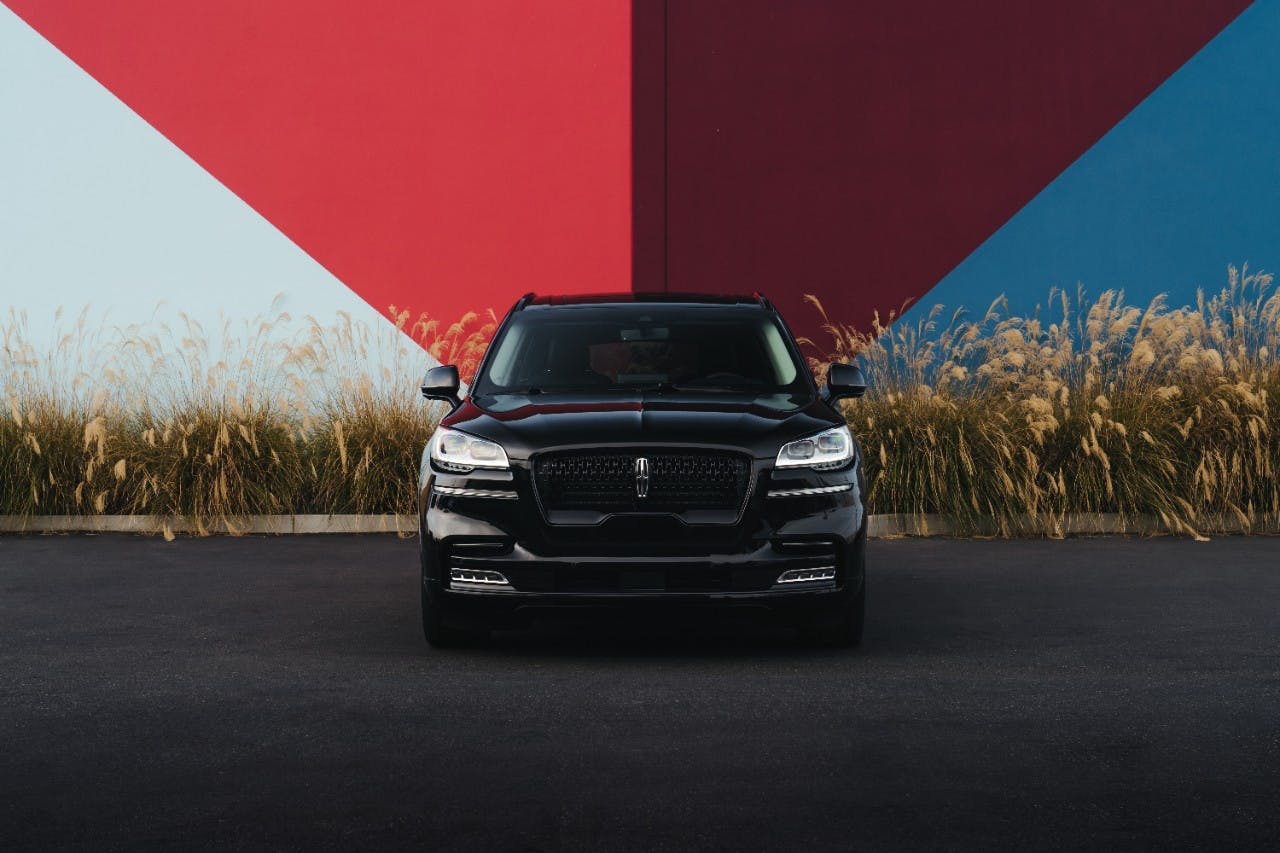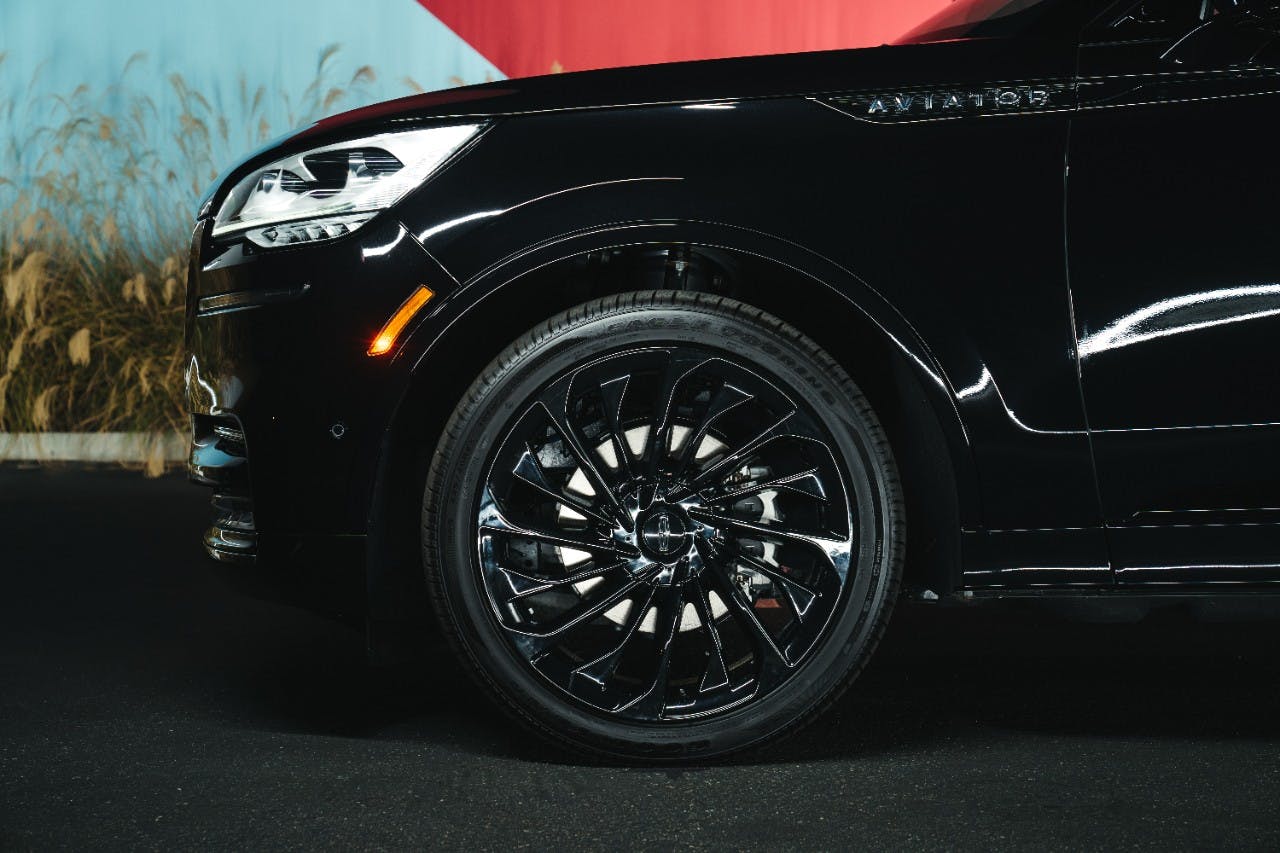Media | Articles
Buy Bugatti’s obscure ’90s super sedan, change afoot at Richard Petty Motorsports, Nissan’s lunar rover

Bugatti’s V-12-powered, four-door jellybean is a ’90s unicorn
Intake: One of just three Bugatti EB112 super sedans ever assembled is being sold in Germany. Designed as a stablemate to the quad-turbo V-12 EB110, Bugatti boss Romano Artioli described the car as “similar to a go-kart, it corners flat and is even more enjoyable to drive than an EB110.” Designed by Giugiaro and influenced by past masters such as the Type 57 SC Atlantic, the EB112 was a total show-stopper when it was revealed to the world in Geneva in 1993. Behind the trademark Bugatti horseshoe grille sat a six-liter V-12, driving all four wheels via a six-speed manual transmission. It was claimed to to accelerate to 62 mph in just 4.3 seconds and top out above 180 mph.
Unfortunately Artioli’s Bugatti went bust, but Monaco-based entrepreneur Gildo Pallanca Pastor acquired its assets, which included two unfinished EB112s, chassis numbers 002 and 003. (#001, which is dark red, is owned by Italdesign.) Pastor set the Monaco Racing Team the task of finishing the cars, keeping one for himself and eventually delivering this example, #002, to the Swiss Bugatti importer Chevalley in February 2000, almost seven years since it was originally ordered. The car was registered in Geneva in 2003 and has been with the same owner ever since, covering just 3900 km (2423 miles) in its lifetime. You can feast your eyes on this incredible unicorn at Schaltkulisse. For Bugatti fans who enjoy a bit of alternate-universe thinking, here’s a question raised by the EB112: Could this sedan have provided the sales volume Bugatti needed to survive its 1995 failure? If the EB112 had succeeded, VW might never have acquired Bugatti, and the company as we know it today—with the record-setting Veyron and Chiron—would not exist. Fans of 21st-century Bugatti may have cause to be grateful that the EB112 remained a unicorn.
Exhaust: Sedans have generally proven to be dead-ends for Bugatti—see the EB218 concept from 1999 and the Galibier 16C in 2009—so the EB112’s oddball status in Bugatti history is the better part of its charm. What might #002 sell for? The other Pastor-owned EB112, #003, was bid to €1.9M at an Artcurial auction in 2016. Since then, Bugattis have appreciated 50 percent, meaning that #002 could be worth €3M, or roughly $3.38M, today.
Polestar 3 gets first (camo-clad) photo, due date

Intake: Two SUVs are due to join the Polestar lineup, following in the footsteps of the handsome and tall liftback known as the Polestar 2. The brand’s forthcoming SUV, the Polestar 3, is due very soon—2022, in fact. Even better, it will be built in the U.S. (at the moment, all Polestars are built in China). Volvo, which is a majority stakeholder in Polestar—remember that each companies is technically owned by China’s Geely—will allow the 3 to be built alongside the Volvo S60 sedan in Charleston, South Carolina. If it seems strange to build an EV alongside an ICE vehicle, know that this past summer Volvo announced its plans to convert the South Carolina facility to produce only electric vehicles.
Exhaust: We knew a Polestar SUV was on the way, and that it’d be built here in the U.S.—but we had gotten neither a glimpse of it nor an idea of its due date. The 3 looks to repeat the handsome-yet-minimalist stylistic formula of the 1 and 2 (and the upcoming 5, as far as we can tell). If this SUV is anything like its lower-slung siblings, however, it’ll be worth a very close look.
Marketplace
Buy and sell classics with confidence
One of NASCAR’s most iconic teams has a new majority owner

Intake: Earlier this week, Richard Petty Motorsports sold majority interest to GMS Racing owner Maury Gallagher. Two charters are included in the agreement, which guarantees two teams a starting position in Sundays’ Cup Series races. While there’s no word yet on the deal’s price tag, charters this season have gone for as much as $10 million. You do the math. Gallagher, the current CEO and Chairman of Allegiant Air, formed GMS Racing in 2014 and since then the team has amassed 41 victories and five championships across NASCAR’s lower ranks. Earlier this year, GMS announced it would be making the jump to Cup Series competition with Ty Dillon at the wheel, though it was still in the market for a charter. This deal accomplishes that and more, as now GMS will have a guaranteed starting spot for its new team and a stake in what is arguably NASCAR’s most iconic name. The second charter will be utilized by current Petty Motorsports driver Erik Jones in 2022.
Exhaust: Despite its historic namesake, Richard Petty Motorsports may not be as old as you think, having formed in 2009 after Petty Enterprises (a team founded by Lee Petty with his sons Richard and Maurice in 1942, which had amassed 268 Cup Series victories) merged with Gillett Evernham Motorsports. The Petty brand, replete with King Richard’s cowboy hat and a white 43 atop a coat of Petty Blue, is simply too iconic, and far too marketable, to fade into the ether. Given Gallagher’s success as business founder and CEO, and his winning record in NASCAR’s lower ranks, we’re willing to bet this is an excellent way for the Petty brand to continue to thrive for years to come.
Auction of Jaguar D-Type bonnet recreation will aid classic car students

Intake: Joel Finn passed away in 2017, and most of his expansive collection was preserved by the Revs Institute. However, a recreation of a long-nose Jaguar D-Type bonnet that Finn bought in 1990 is now being auctioned on Bring a Trailer, with proceeds going to the Piston Foundation, which assists students pursuing careers in the classic car industry. The aluminum bonnet is said to have been manufactured in the early 1970s by British coachbuilding firm Williams & Pritchard (under the guidance of Lynx Engineering) for use on chassis XKD 558.
Exhaust: Joel Finn’s love of cars is still having an impact of his fellow collectors by helping future classic car technicians pay for their education. As its mission statement says, the Piston Foundation “marries the needs of students with the needs of car enthusiasts,” and the auction of the D-Type bonnet the perfect example of that.
Maserati Ghibli will likely die in 2023 with no direct successor
Intake: First unveiled in 2013, the Ghibli sedan serves as Maserati’s entry-level and most affordable model—but its tenure at the trident may soon end. The 21st-century Ghibli has precious little in common with its eponymous forbearer, a 1960s front-engine GT with sharp Giugiaro sheetmetal and a dry-sump V-8. The current Ghibli carries the dubious distinction of middling-luxury sedan, and recent updates have been far from earth-shattering: In 2020, the Ghibli received a facelift and its first-ever hybrid powertrain, centered on a 2.0-liter turbo four-cylinder; earlier this year, it received a cosmetic-only special edition (shown below) that paid homage to Japanese street culture. An admirable nod to the cosmopolitan car scene, but a luxury sedan cannot survive forever on special editions and minor facelifts. Automotive News is reporting that the Ghibli will be killed off after the 2022 model year and that no direct replacement is in the works.
Exhaust: Maserati has big plans a-cookin’, not only for BEVs but also for its in-house Nettuno V-6. (See the gorgeous MC20.) It’s no surprise that the gray-haired Ghibli, dogged by clunky styling and an interior that dipped both hands into the FCA parts bin, will soon be laid to rest.
Nissan makes a moonshot and a monoposto

Intake: Nissan’s EVangelism knows no earthly bounds. The Japanese firm has just developed a lunar rover prototype in conjunction with the Japan Aerospace Exploration Agency. The remote-operated vehicle will use Nissan’s e-4ORCE all-wheel control technology from the Ariya electric crossover to explore the lunar surface. Nissan says that its precision control of each wheel means that the rover is less likely to get bogged down in moondust.
Meanwhile, back down to earth, the Ariya’s powertrain has also been deployed in a single-seater concept racer (below). It’s essentially a Formula E car for the road, dressed up with minimal bodywork that follows Nissan’s “Timeless Japanese Futurism” design language. Most notable is the large illuminated V that shapes the car’s nose, a version of which also appears on the Ariya, which we’ll see on the roads in 2022.
Exhaust: The Japanese firm is boldly going where no Nissan has gone before with these and more recently revealed concepts. It’s all part of the brand’s Ambition 2030 program which is, so far, suggesting that its future EVs may well be less appliance-like and more entertaining.
Lincoln blacks out Aviator with new Jet Package
Intake: Lincoln is hopping on the black-trim bandwagon with a new package for Aviator Reserve Series buyers. In place of the chrome accents found on regular Reserve Series SUVs, the new Jet Package brings a blacked-out look to the grille, caps for the side-view mirrors, roof rails, lower fascia, and lower cladding and lip moldings. Swanky 22-inch black-painted wheels complete the ensemble. The Jet Package will be offered with four body colors: Pristine White, Infinite Black, Silver Radiance, and Burgundy Velvet. Lincoln says it will be available as an option beginning early next year.
Exhaust: Lincoln’s exterior styling has been quite strong lately, and there’s bound to be plenty of prospective Aviator buyers who think blacked-out trim makes their car look mean. While the Infinite Black with black trim combo will probably be the hot seller (maybe eventually this trend will die) we’d suggest opting for Pristine White, as seen above.


